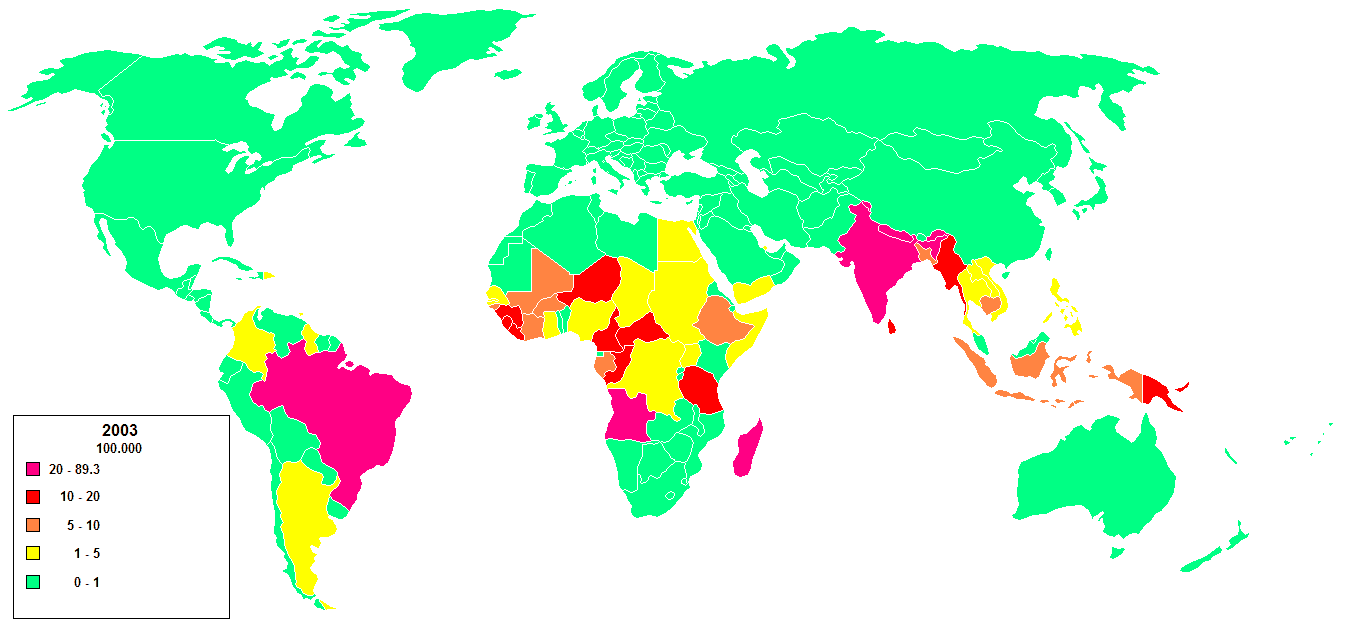Leprosy epidemiology and demographics
|
Leprosy Microchapters |
|
Diagnosis |
|---|
|
Treatment |
|
Case Studies |
|
Leprosy epidemiology and demographics On the Web |
|
American Roentgen Ray Society Images of Leprosy epidemiology and demographics |
|
Risk calculators and risk factors for Leprosy epidemiology and demographics |
Editor-In-Chief: C. Michael Gibson, M.S., M.D. [1]
Overview
Epidemiology

Worldwide, two to three million people are estimated to be permanently disabled because of Hansen's disease.[1] India has the greatest number of cases, with Brazil second and Myanmar third.
In 1999, the world incidence of Hansen's disease was estimated to be 640,000; in 2000, 738,284 cases were identified. In 1999, 108 cases occurred in the United States. In 2000, the World Health Organization (WHO) listed 91 countries in which Hansen's disease is endemic.
India, Myanmar and Nepal contained 70% of cases. In 2002, 763,917 new cases were detected worldwide, and in that year the WHO listed Brazil, Madagascar, Mozambique, Tanzania and Nepal as having 90% of Hansen's disease cases.
According to recent figures from the WHO, new cases detected worldwide have decreased by approximately 107,000 cases (or 21%) from 2003 to 2004. This decreasing trend has been consistent for the past three years.
In addition, the global registered prevalence of HD was 286,063 cases; 407,791 new cases were detected during 2004.
Hansen's disease is tracked by the Centers for Disease Control and Prevention (CDC). Its prevalence in the United States is believed to be rising and underreported.[2] There are a rising number of cases worldwide, though pockets of high prevalence continue in certain areas such as Brazil, South Asia (India, Nepal), some parts of Africa (Tanzania, Madagascar, Mozambique) and the western Pacific.
Due to the rising numbers, several support groups exist, the headquarters of which is currently in Lynbrook, NY and headed by Brian Marasco, leprosy survivor.
References
- ↑
- ↑ Levis W (2007-05-20). "Leprosy rising". CNN.